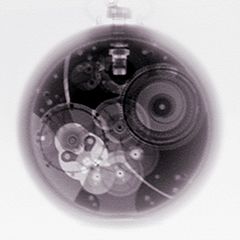DIY brainstorm...nay, SQUALL!!!
hi,
i'm looking for suggestions for over-the-top interesting stuff to do with photos and some how-to info from anyone who's done any over-the-top crazy cool stuff w thr photos. all suggestions welcome...i've been asked to present a few ideas, lots of info and even more fun to elementary through university student art groups and classes, one of which is a science research charter high school class that wld like to expand thr arts programs while keeping the science focus.
that's just a quick example, though so it doesn't have to be science-related. what have you seen, what have you done, what off-beat substrates do you experiment with, how do you present your images w a forward-thinking, step-ahead-of-most creative edge? what appeals to you, what have you wanted to try but haven't yet...the questions are endless, really. so for this, anything goes!! :)
thanks in advance...it'll be fun to see what we can come up with! (this is also posted in general and members talk forums bc it's a fairly large project and i don't want to rely only on my gray matter for this one, so go crazy and i meaaaaan that! :D
cheers,
s
i'm looking for suggestions for over-the-top interesting stuff to do with photos and some how-to info from anyone who's done any over-the-top crazy cool stuff w thr photos. all suggestions welcome...i've been asked to present a few ideas, lots of info and even more fun to elementary through university student art groups and classes, one of which is a science research charter high school class that wld like to expand thr arts programs while keeping the science focus.
that's just a quick example, though so it doesn't have to be science-related. what have you seen, what have you done, what off-beat substrates do you experiment with, how do you present your images w a forward-thinking, step-ahead-of-most creative edge? what appeals to you, what have you wanted to try but haven't yet...the questions are endless, really. so for this, anything goes!! :)
thanks in advance...it'll be fun to see what we can come up with! (this is also posted in general and members talk forums bc it's a fairly large project and i don't want to rely only on my gray matter for this one, so go crazy and i meaaaaan that! :D
cheers,
s
hellooooo...i know there are some synapses firing somewhere here...
Hi Sarah. Very few synapses left, but here's my thoughts:
One of the most fascinating things I have discovered in photography is just how much the camera is DIFFERENT from the human eye. There is a lot of science stuff about the similarities (focus, lens, aperture, etc), but not a lot written about the differences.
http://www.ritsumei.ac.jp/~akitaoka/index-e.html
The link above is a page of optical illusions. These are fixed images that could be created with camera (film or digital), but the human brain sees them as moving. In fact, the brain contributes a lot to what we believe the eye is seeeing, and much of photography is trying to compensate for that.
One very big difference between the camera and human vision is the whole dynamic range thing. I am very interested in the tricks you can apply with a digital camera to overcome the dynamic range limits. Here is a link to get started:
http://www.hdrsoft.com/
And of course, you can explore the fact that cameras can extend their "vision" into the regions of the electromagnetic spectrum either side of visible light (which the eye can't). IR photography is one example (lots of practitioners here on FC), and x-ray is another:
 The Anatomy of Ti…
MWPhoto
11.01.06
4
The Anatomy of Ti…
MWPhoto
11.01.06
4
Sounds like a fun project! Best wishes.
Mark
One of the most fascinating things I have discovered in photography is just how much the camera is DIFFERENT from the human eye. There is a lot of science stuff about the similarities (focus, lens, aperture, etc), but not a lot written about the differences.
http://www.ritsumei.ac.jp/~akitaoka/index-e.html
The link above is a page of optical illusions. These are fixed images that could be created with camera (film or digital), but the human brain sees them as moving. In fact, the brain contributes a lot to what we believe the eye is seeeing, and much of photography is trying to compensate for that.
One very big difference between the camera and human vision is the whole dynamic range thing. I am very interested in the tricks you can apply with a digital camera to overcome the dynamic range limits. Here is a link to get started:
http://www.hdrsoft.com/
And of course, you can explore the fact that cameras can extend their "vision" into the regions of the electromagnetic spectrum either side of visible light (which the eye can't). IR photography is one example (lots of practitioners here on FC), and x-ray is another:
 The Anatomy of Ti…
MWPhoto
11.01.06
4
The Anatomy of Ti…
MWPhoto
11.01.06
4
Sounds like a fun project! Best wishes.
Mark
thanks mark! i'll check out the links and try some stuff... see what happens... sounds cool!


